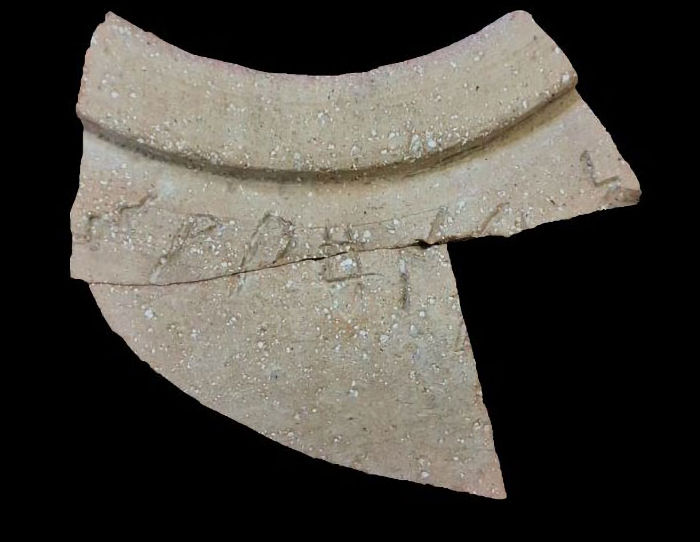Conny Waters – AncientPages.com – In a new study published in Hebrew University’s Jerusalem Journal of Archaeology, Dr. Daniel Vainstub deciphered a partially preserved inscription that was found on the neck of a large jar dated back to the time of King Solomon.
The jar was originally discovered together with the remains of six other large jars during excavations carried out in 2012 in the Ophel area south of the Temple Mt., led by the late Dr. Eilat Mazar from the Insтιтute of Archeology of the Hebrew University of Jerusalem. From the original inscription, only seven letters survived.

In 2012, archaeologists conducting excavations in the Ophel area south of the Temple Mount, uncovered a large jar inscribed with text written in Canaanite script, from which the ancient Hebrew script used during the time of the First Temple derives. Image Credit : Shani Jaffe
Over the course of the last decade, more than ten researchers suggested various readings without reaching a consensus. Still, they agreed the inscription is written in Canaanite script, from which the ancient Hebrew script that used during the time of the First Temple was developed.
In the study, Dr. Daniel Vainstub determined the script is “Ancient South Arabian,” the script that was used in the south-west part of the Arabian Peninsula (the Yemen region of today), where the Kingdom of Sheba was the dominant kingdom at that time.
“Deciphering the inscription on this jar teaches us not only about the presence of a speaker of Sabaean in Israel during the time of King Solomon, but also about the geopolitical relations system in our region at that time – especially in light of the place where the jar was discovered, an area known for also being the administrative center during the days of King Solomon. This is another testament to the extensive trade and cultural ties that existed between Israel under King Solomon and the Kingdom of Sheba,” Dr. Vainstub explains in a press statement.
According to the new interpretation, the inscription on the jar reads, “[ ]shy l’dn 5,” means five “ šǝḥēlet,” referring to one of the four ingredients mentioned in the Bible (Exodus 30:34) required for the incense mixture. The “ šǝḥēlet ” was an essential ingredient in the incense that was burnt in the First and Second Temples and was called “tziporen” in Rabbinic literature. This indicates a clear connection between Jerusalem of the 10th century BCE (the days of the Kingdom of Solomon) and the Kingdom of Sheba.

Temple Mount. Credit: Avram Gracier – CC BY-SA 3.0
It appears that the pottery jar was produced around Jerusalem and the inscription on it was engraved before it was sent for firing by a speaker of Sabaean who was involved in supplying the incense spices.
The Ophel site in the Archaeological Park at the foot of the southern wall, within the area of the Jerusalem Walls National Park, includes a trail that pᴀsses between 2,000-year-old mikvahs used by pilgrims to the Temple. This is also the area where an administrative center of the kingdom of King Solomon was located.
See also: More Archaeology News
During the 10th century BCE, the Kingdom of Sheba thrived as a result of the cultivation and marketing of perfume and incense plants, with Ma’rib as its capital. They developed advanced irrigation methods for the fields growing the plants used to make perfumes and incense.
Their language was a South Semitic one. King Solomon is described in the Bible as controlling the trade routes in the Negev, which Sabaean camel caravans carrying perfumes and incense plants pᴀssed through on their way to Mediterranean ports for export.
Written by Conny Waters – AncientPages.com Staff Writer





